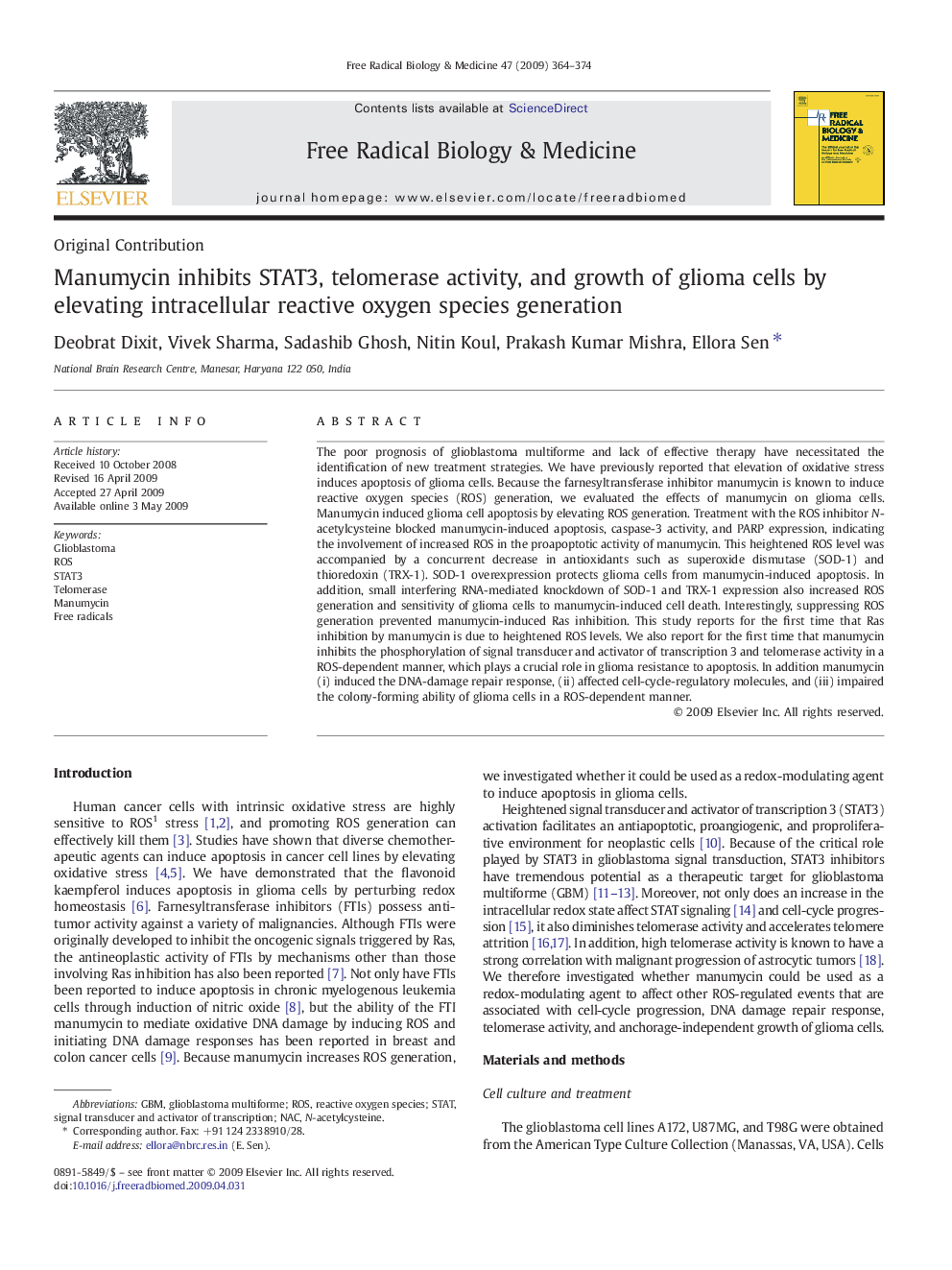| کد مقاله | کد نشریه | سال انتشار | مقاله انگلیسی | نسخه تمام متن |
|---|---|---|---|---|
| 1910630 | 1046780 | 2009 | 11 صفحه PDF | دانلود رایگان |

The poor prognosis of glioblastoma multiforme and lack of effective therapy have necessitated the identification of new treatment strategies. We have previously reported that elevation of oxidative stress induces apoptosis of glioma cells. Because the farnesyltransferase inhibitor manumycin is known to induce reactive oxygen species (ROS) generation, we evaluated the effects of manumycin on glioma cells. Manumycin induced glioma cell apoptosis by elevating ROS generation. Treatment with the ROS inhibitor N-acetylcysteine blocked manumycin-induced apoptosis, caspase-3 activity, and PARP expression, indicating the involvement of increased ROS in the proapoptotic activity of manumycin. This heightened ROS level was accompanied by a concurrent decrease in antioxidants such as superoxide dismutase (SOD-1) and thioredoxin (TRX-1). SOD-1 overexpression protects glioma cells from manumycin-induced apoptosis. In addition, small interfering RNA-mediated knockdown of SOD-1 and TRX-1 expression also increased ROS generation and sensitivity of glioma cells to manumycin-induced cell death. Interestingly, suppressing ROS generation prevented manumycin-induced Ras inhibition. This study reports for the first time that Ras inhibition by manumycin is due to heightened ROS levels. We also report for the first time that manumycin inhibits the phosphorylation of signal transducer and activator of transcription 3 and telomerase activity in a ROS-dependent manner, which plays a crucial role in glioma resistance to apoptosis. In addition manumycin (i) induced the DNA-damage repair response, (ii) affected cell-cycle-regulatory molecules, and (iii) impaired the colony-forming ability of glioma cells in a ROS-dependent manner.
Journal: Free Radical Biology and Medicine - Volume 47, Issue 4, 15 August 2009, Pages 364–374